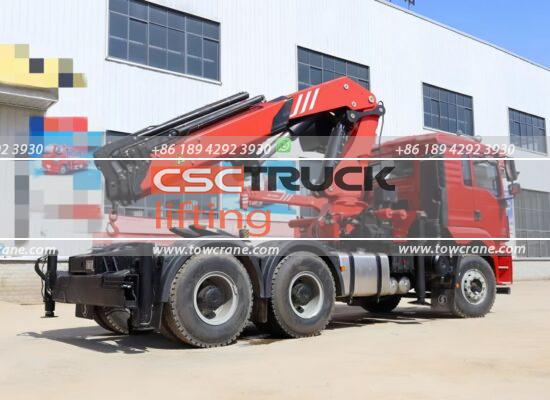Specialized vehicles, including sanitation trucks, engineering vehicles, special purpose vehicles, and cargo transport trucks, play a crucial role in modern construction and urban maintenance. Esimerkiksi, mixers enhance efficiency on construction sites, tow trucks transport accident vehicles, and sewage suction trucks extract sewage from urban community sewers. A key component for the safe operation of these vehicles is their braking system. Studies indicate that many traffic accidents are caused by brake system failures, such as tire blowouts and vehicle fires. Siksi, regular inspection of the brake system, particularly the brake gap and brake pad thickness, is essential. Here’s how to adjust the brake gap effectively.
Understanding the Camshaft Brake System
Working Principle: In a camshaft brake system, compressed air enters the brake cylinder, causing the push rod to extend outward. This movement drives the adjustment arm, which rotates the camshaft. The S-cam at the end of the camshaft pushes the brake pads outward, making contact with the brake drum to create braking force, slowing down or stopping the vehicle. Over time, brake pads wear thin, increasing the brake gap. If not adjusted, the brake cylinder might fully extend without the brake pads effectively contacting the brake drum, resulting in weak braking or complete brake failure.
Brake Gap Adjustment
Adjustment Arm: The brake gap adjustment relies on the adjustment arm, which can be automatic or manual. Here’s how to adjust the brake gap with a manual adjustment arm:
- Locate the Adjusting Nut: The manual adjustment arm has an adjusting nut inside the locking device. This nut controls the brake gap.
- Observation Hole: Open the observation hole on the dust cover. This hole allows you to observe the rotation of the adjusting nut, ensuring it reduces the brake gap.
- Adjust the Nut: Rotate the adjusting nut to reduce the brake gap. Continue adjusting until the brake pads contact the brake drum without any gap. If the gap becomes too tight, rotate the nut 180 degrees in the opposite direction to slightly increase the gap, ensuring proper brake function.
Automatic Adjustment Arms: Yleensä, automatic adjustment arms self-regulate and do not require manual adjustment. Kuitenkin, their quality and reliability may not always match those of manual adjustment arms, necessitating occasional checks.
Importance of Timely Adjustment
Prompt adjustment of the brake gap is crucial to maintaining effective braking. If the brake gap is not adjusted:
- The brake cylinder might fully extend without the brake pads effectively contacting the brake drum, leading to insufficient braking.
- Continuous driving with an improper brake gap can cause irreparable damage to the braking system, risking the safety of the vehicle and its occupants.
Regular Maintenance
To ensure the safety and functionality of specialized vehicles:
- Regular Inspections: Conduct regular inspections of the brake system, focusing on the brake gap and brake pad thickness.
- Timely Adjustments: Make timely adjustments to the brake gap as needed.
- Professional Maintenance: Seek professional maintenance services periodically to ensure the braking system operates optimally.
By following these guidelines, drivers can help prevent brake system failures, ensuring the safety and reliability of specialized vehicles.












